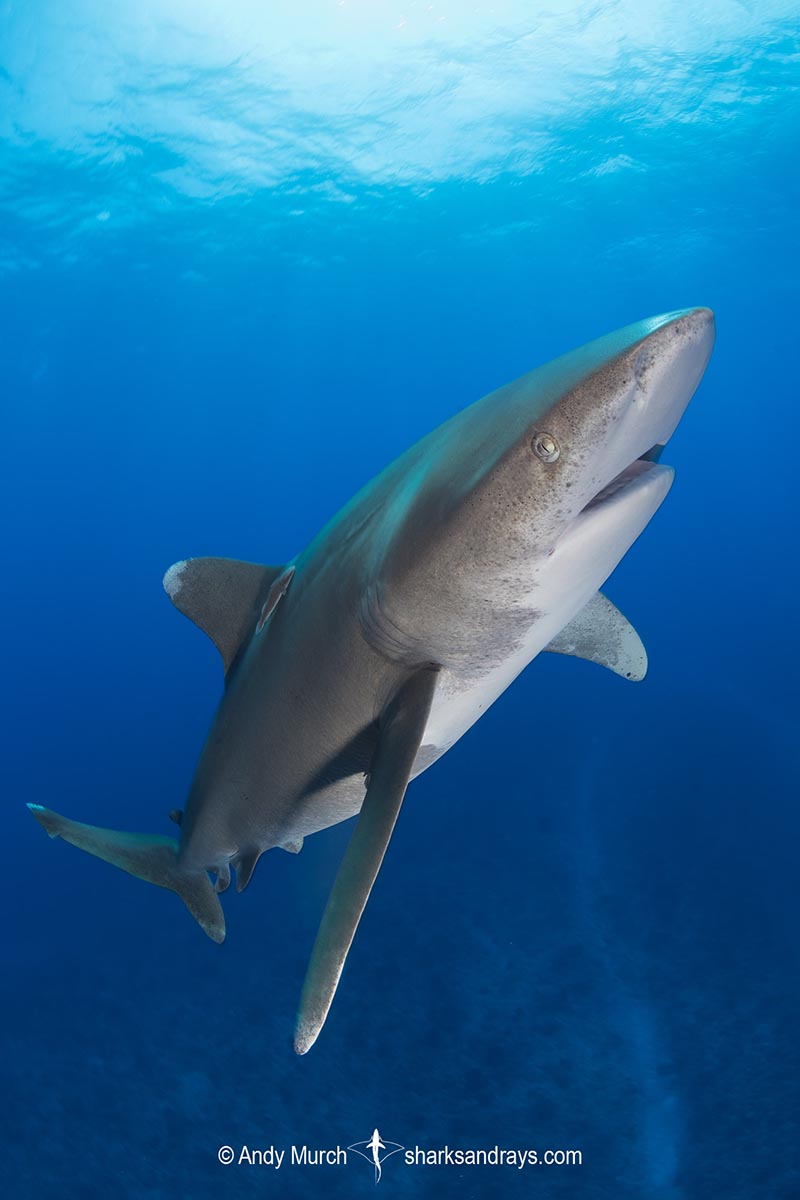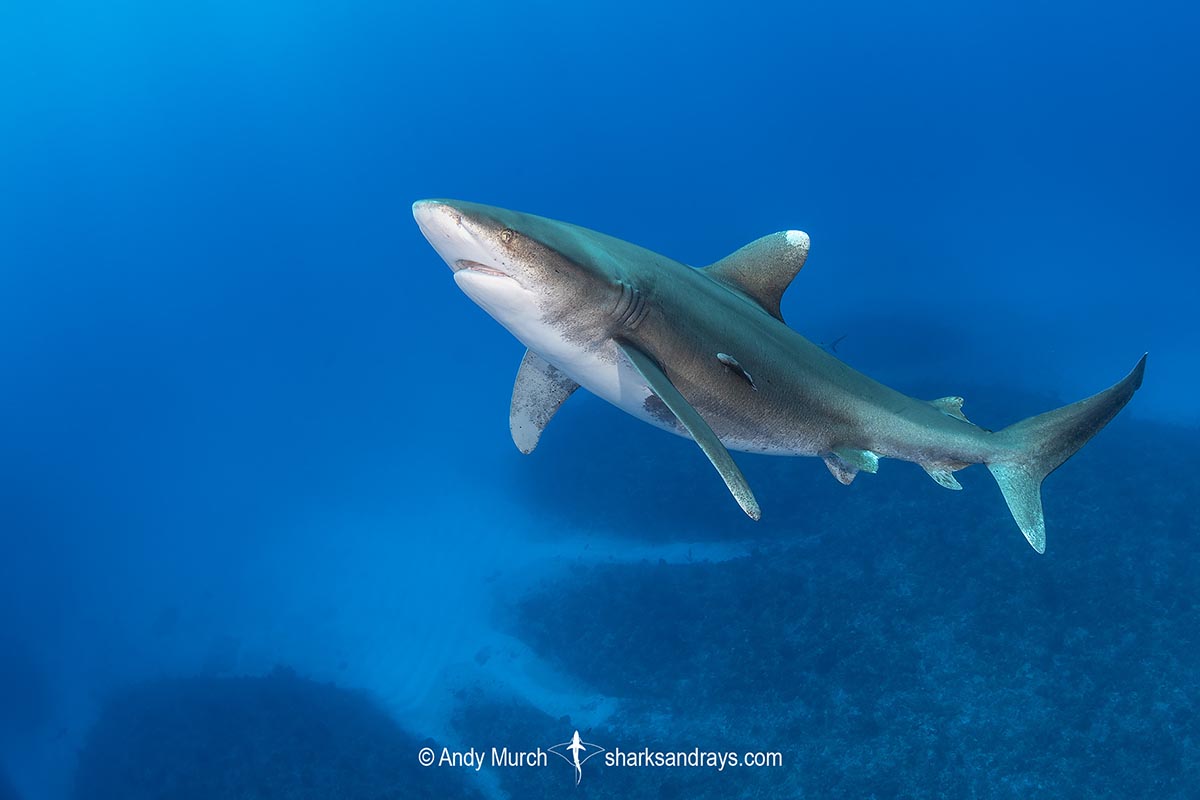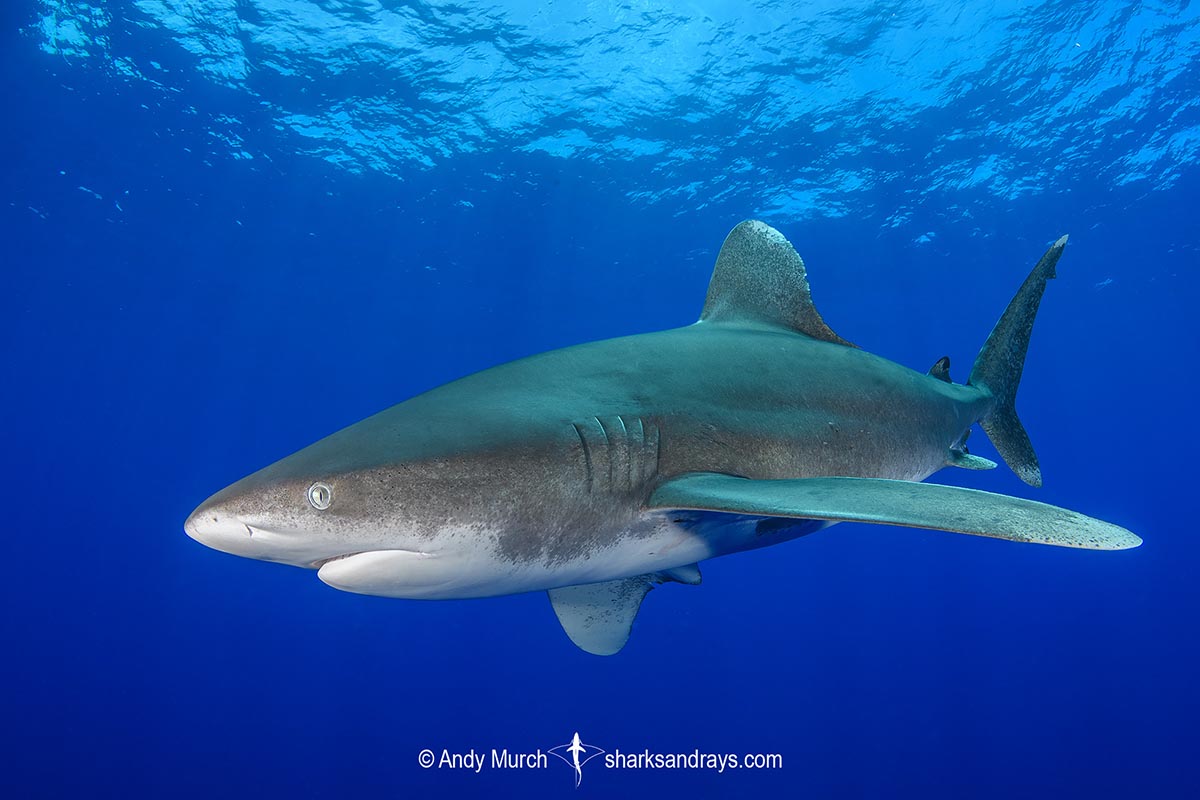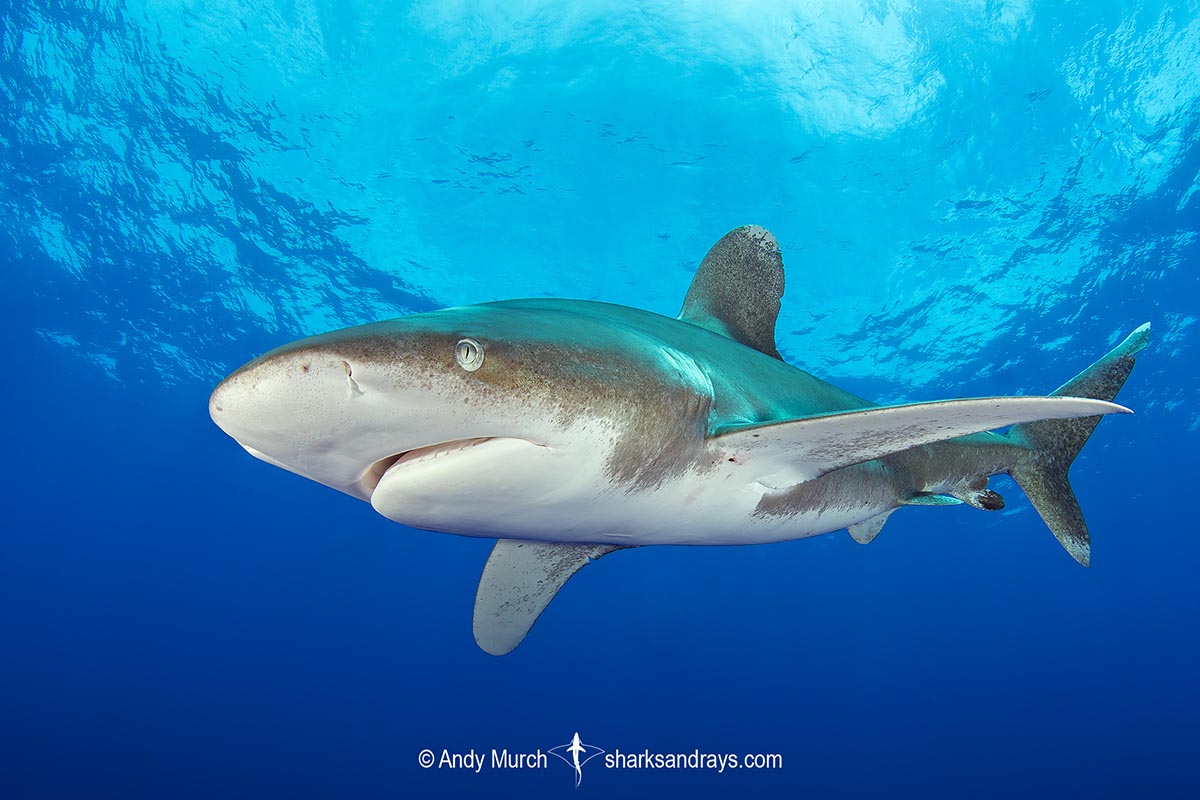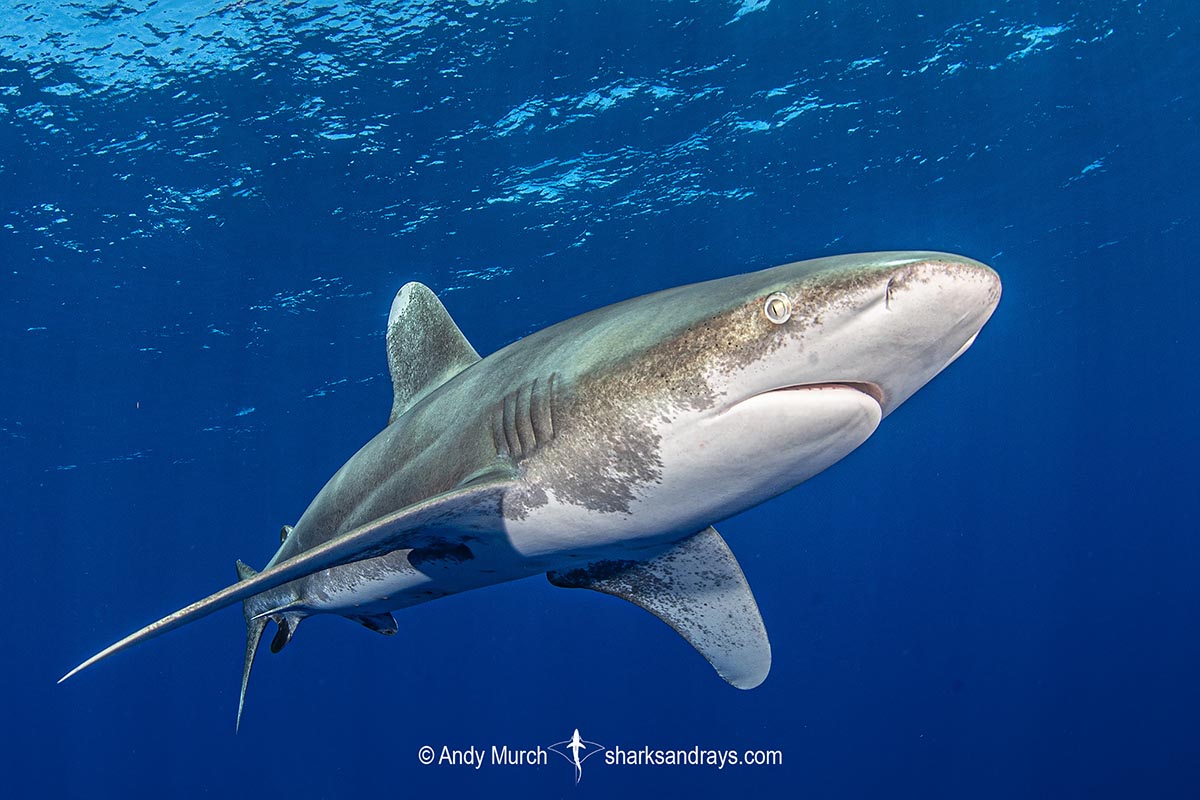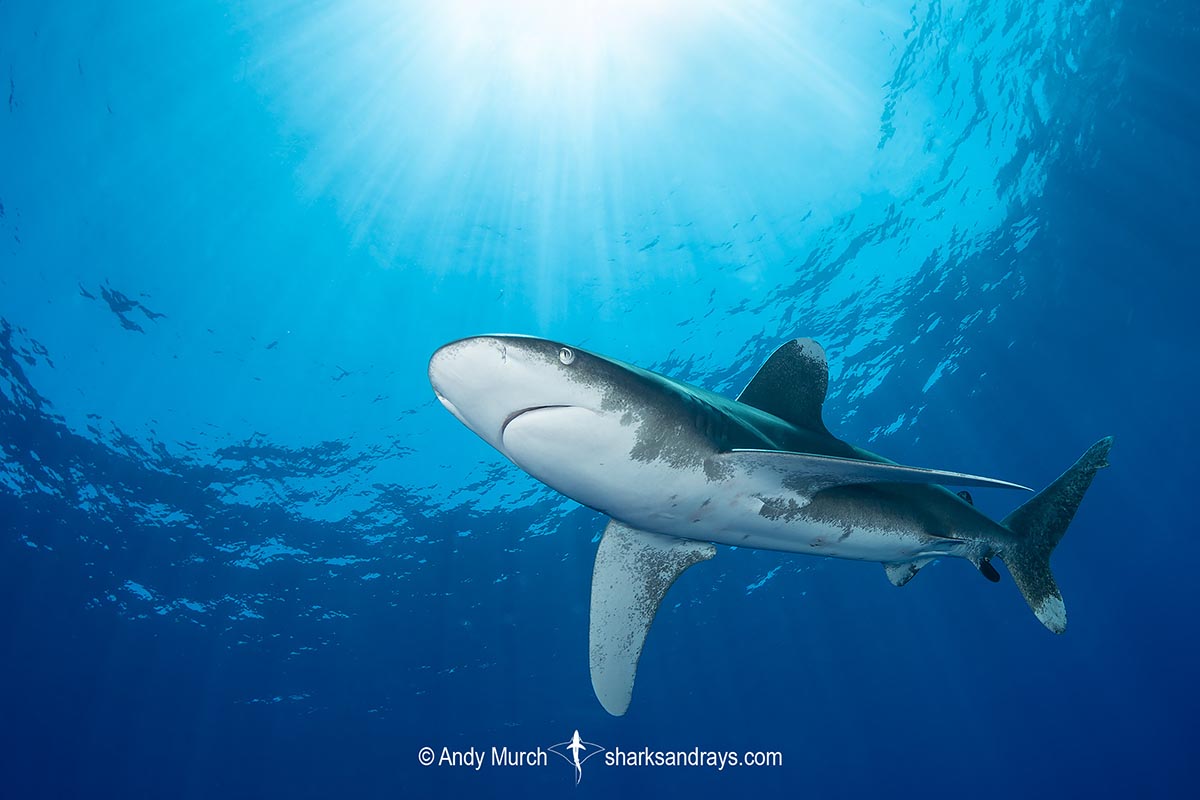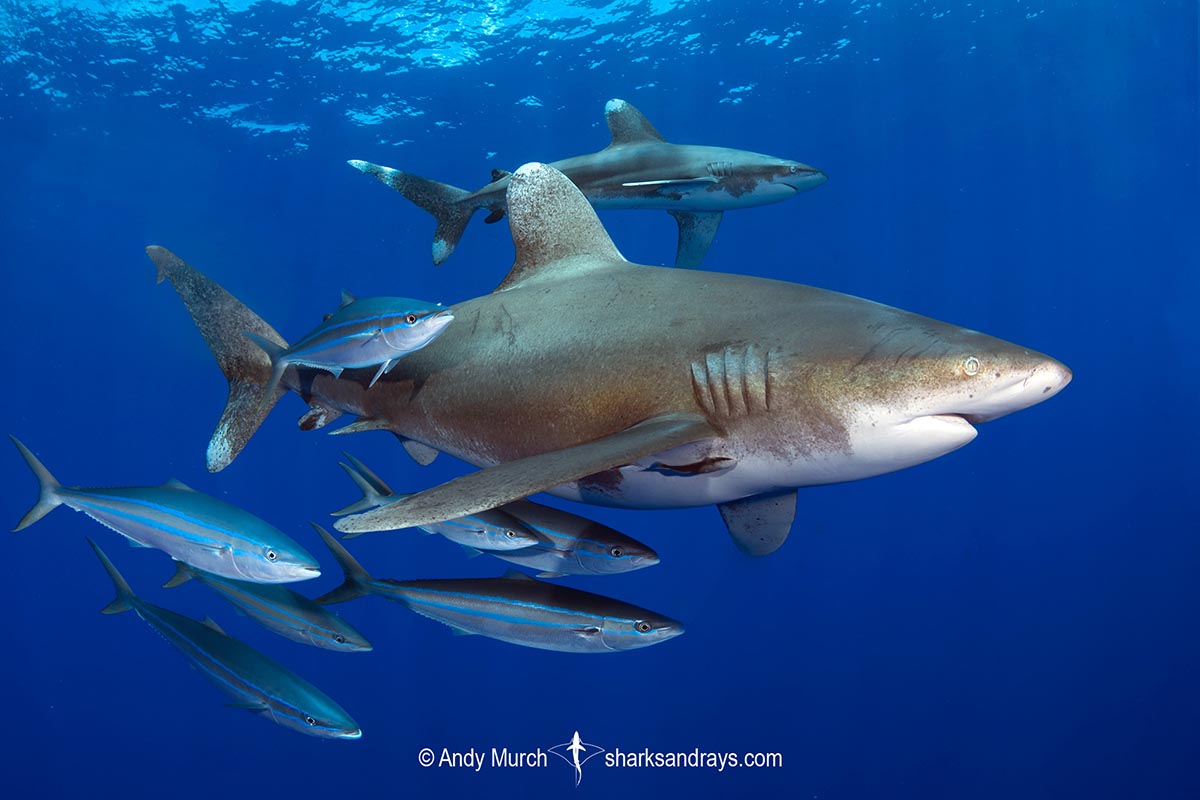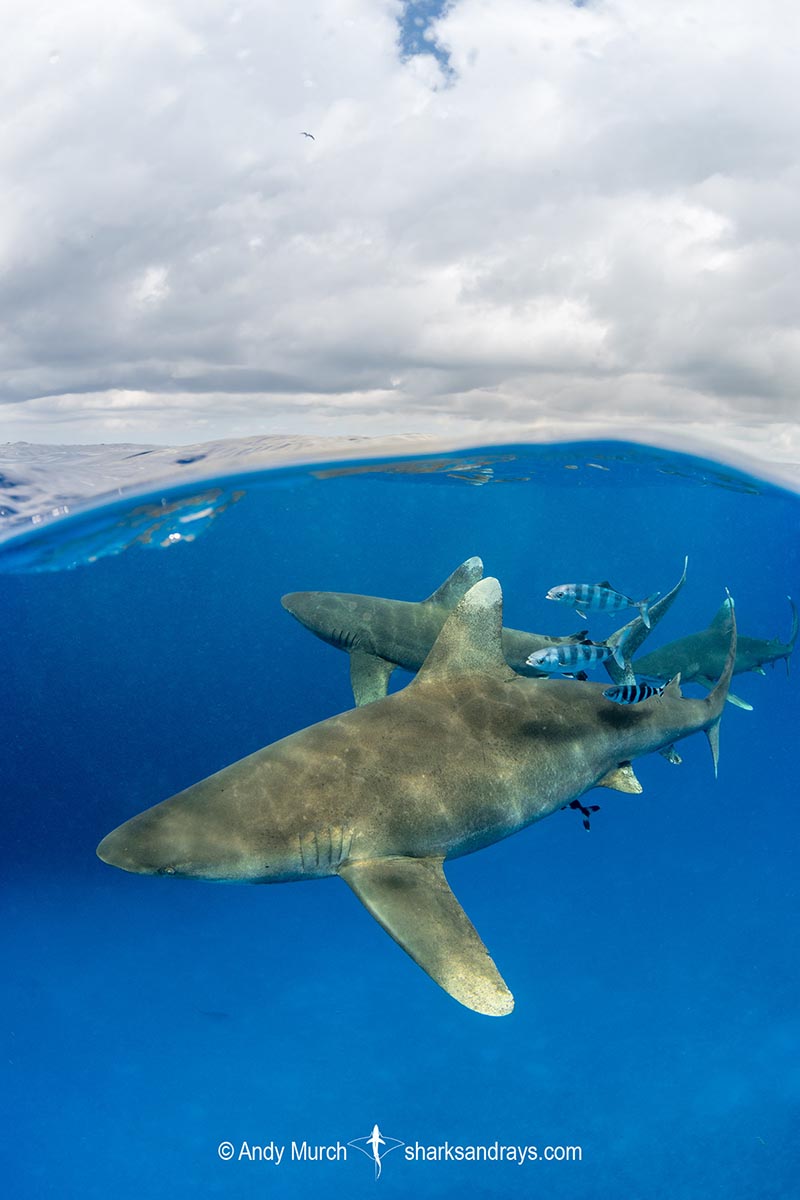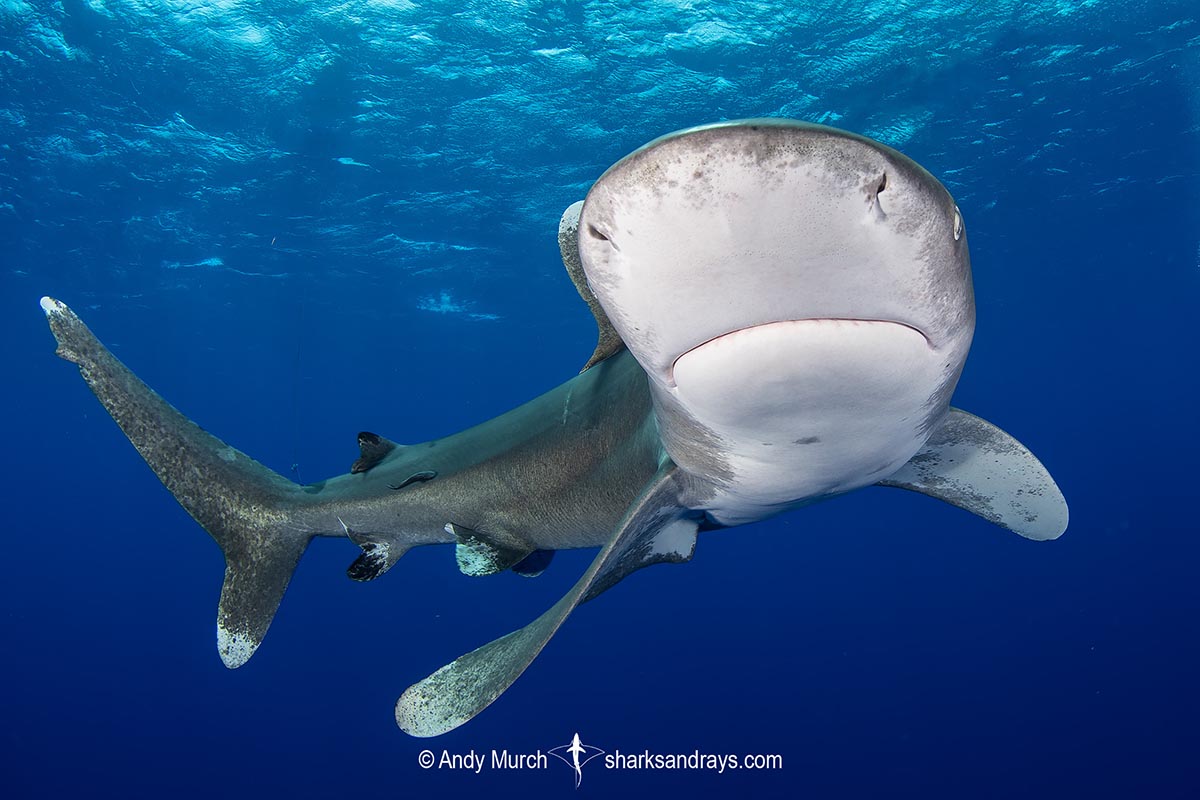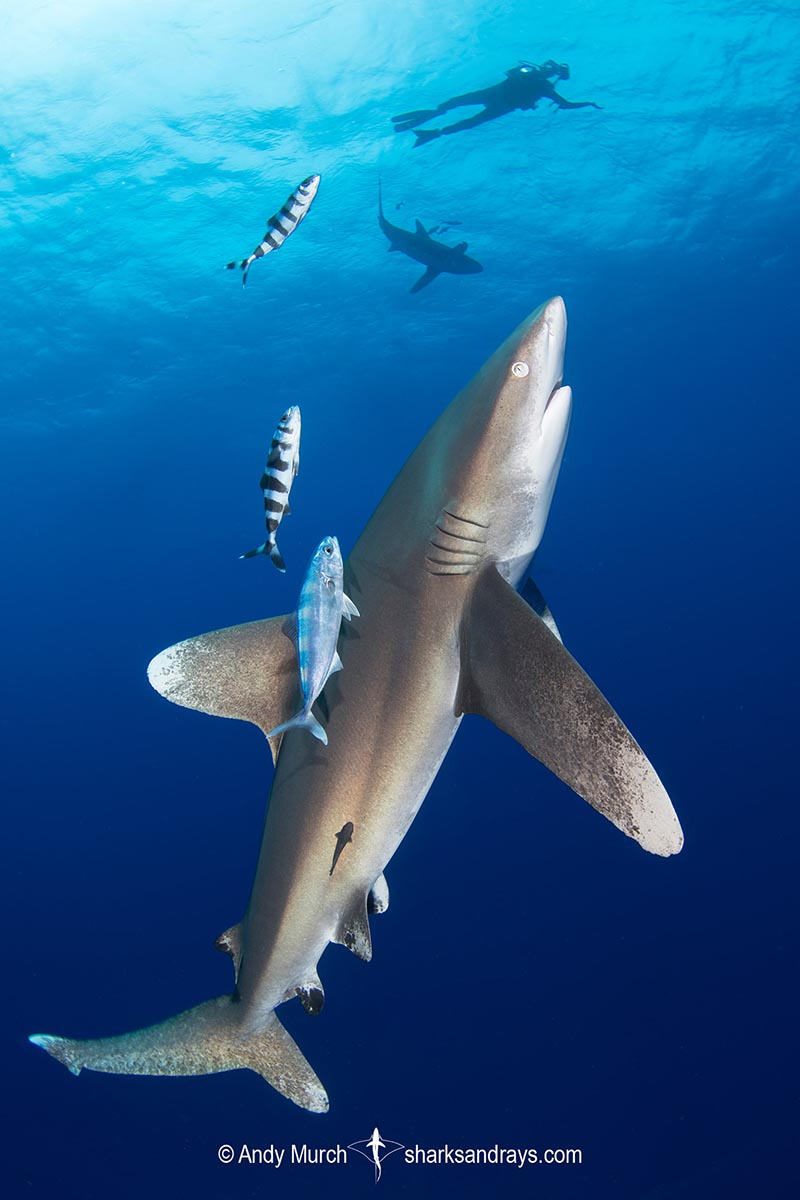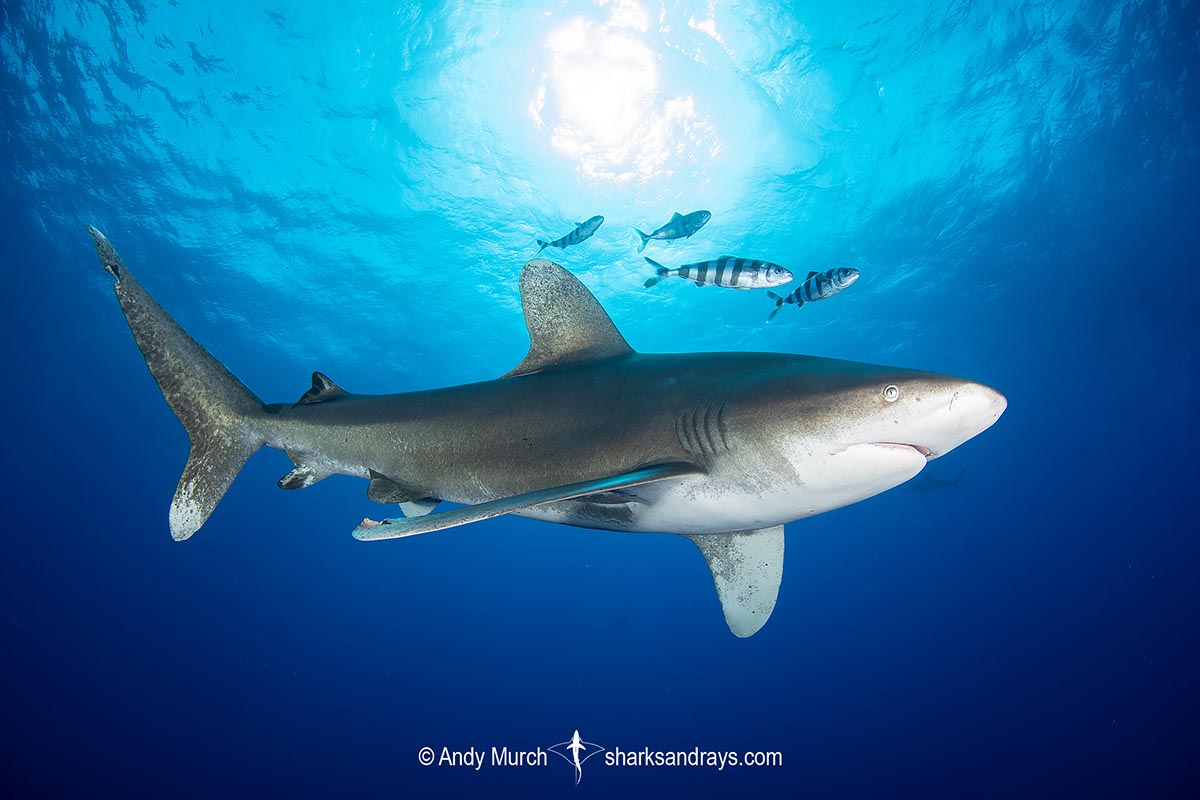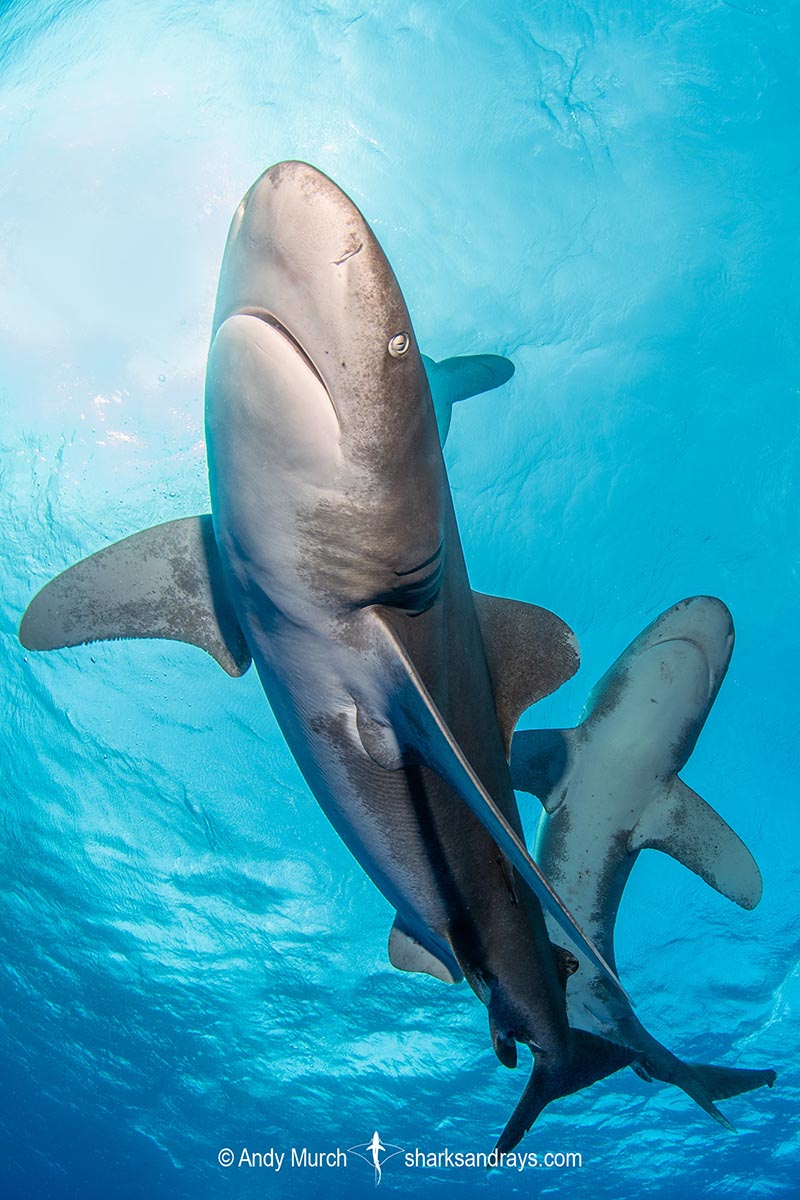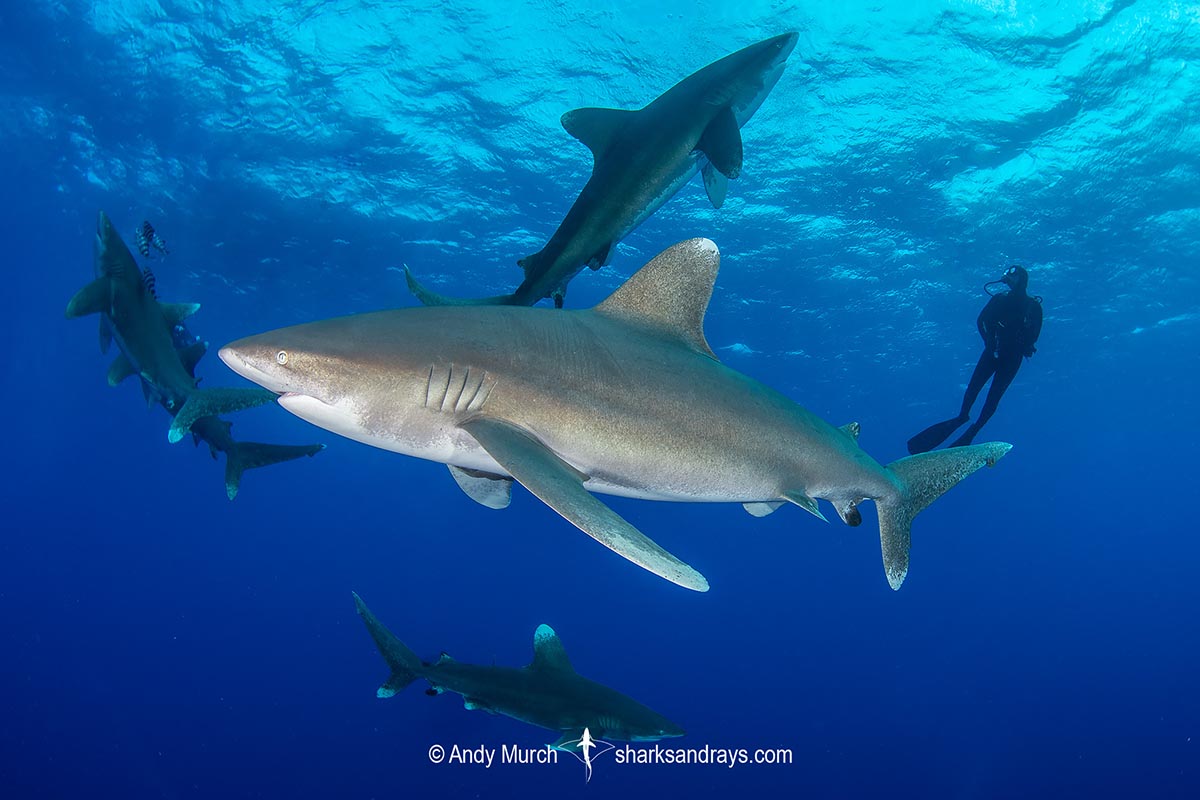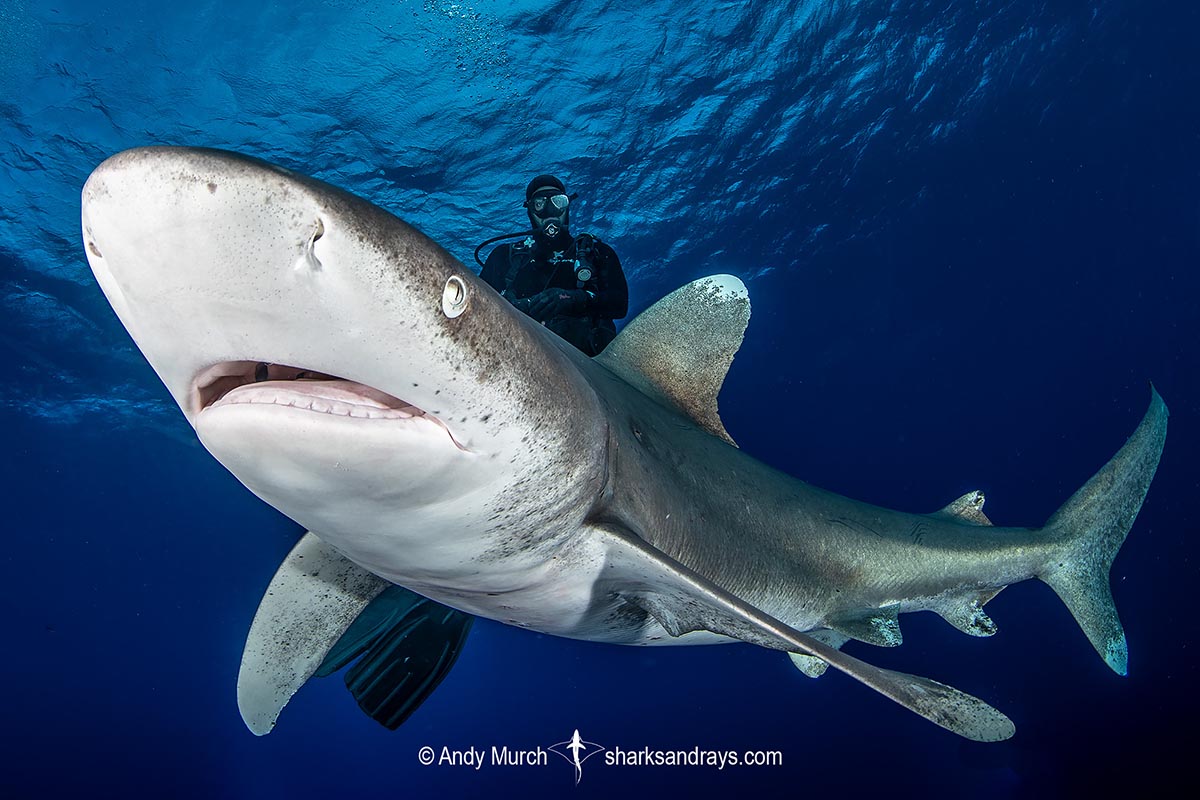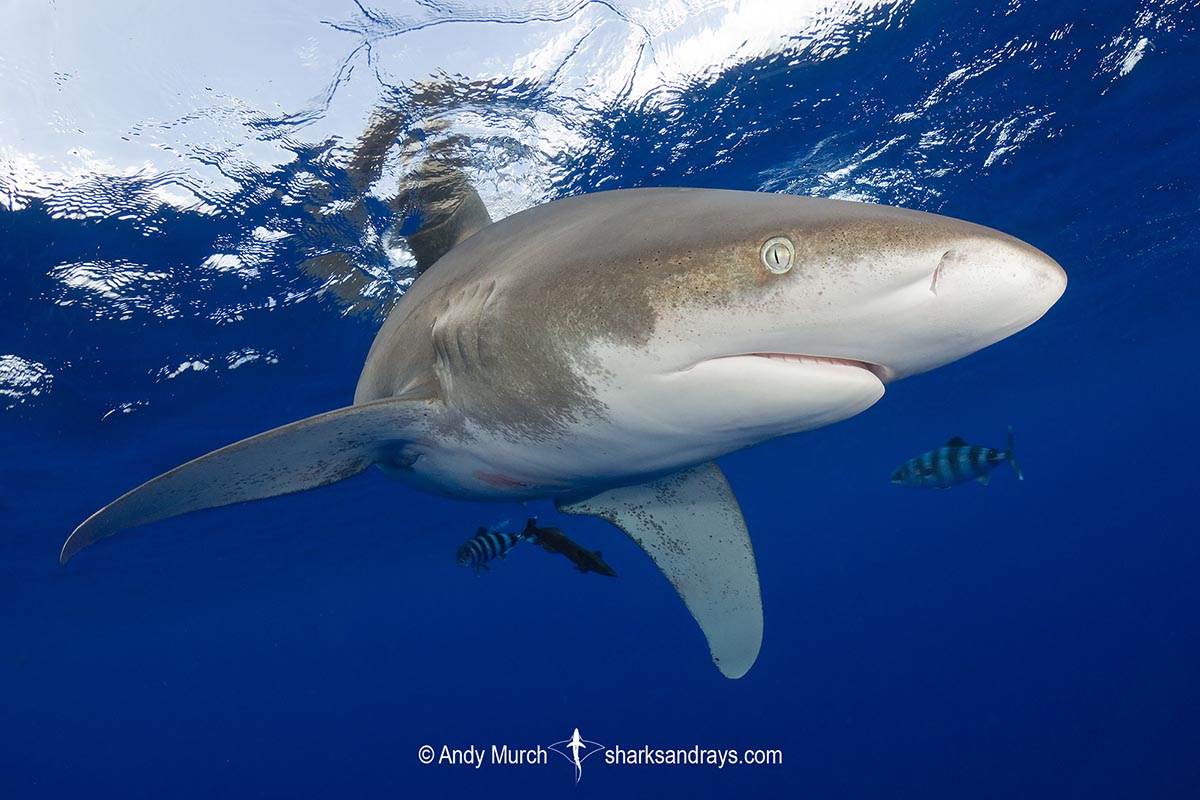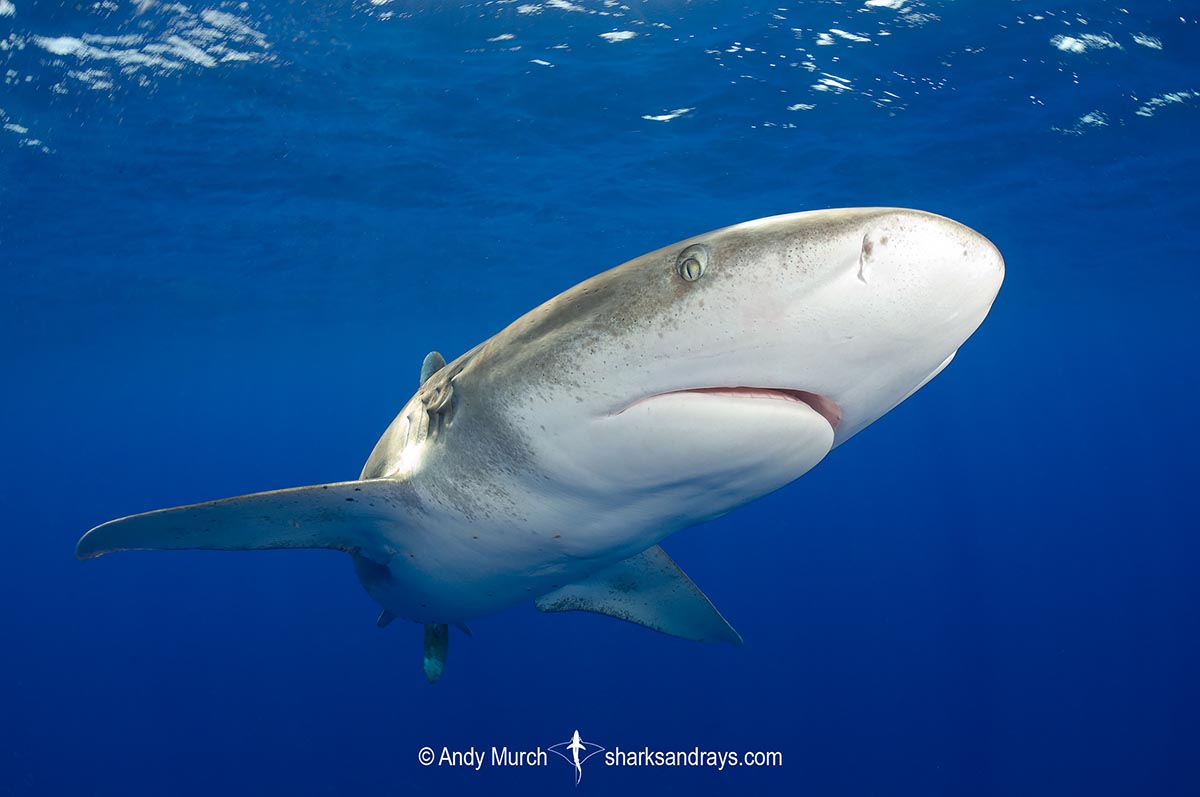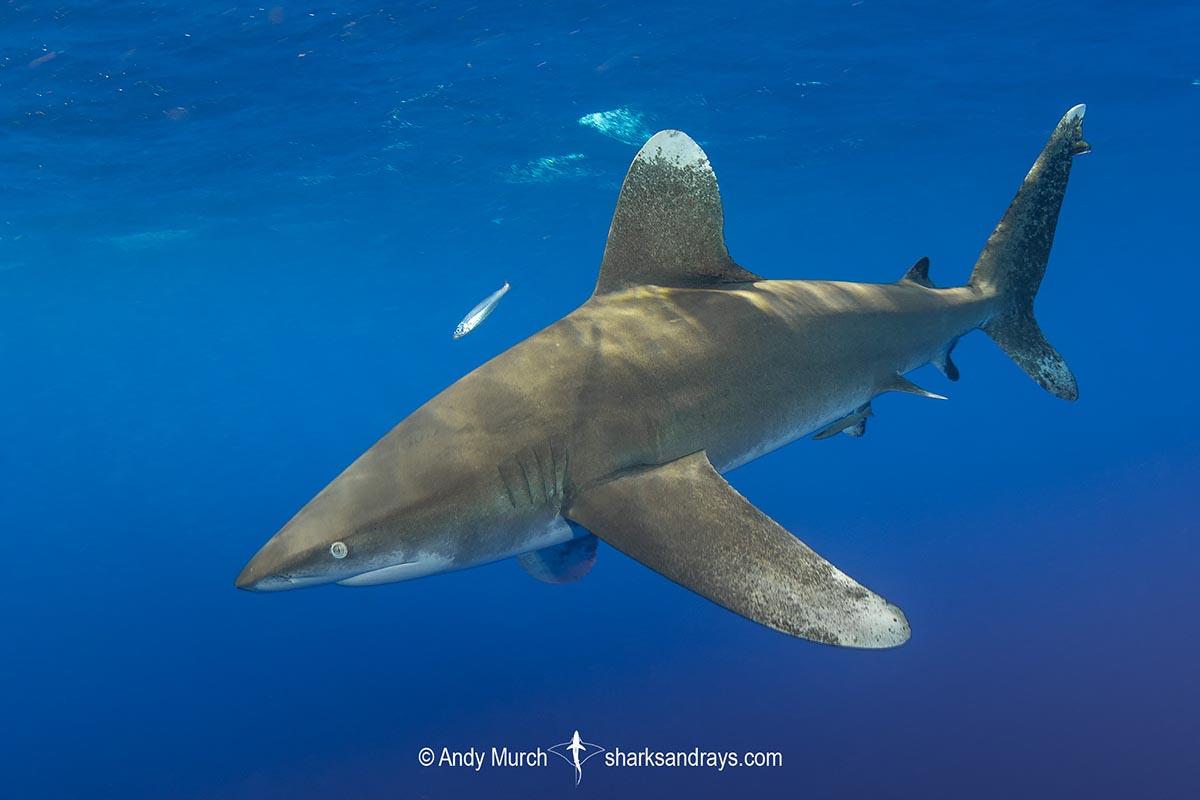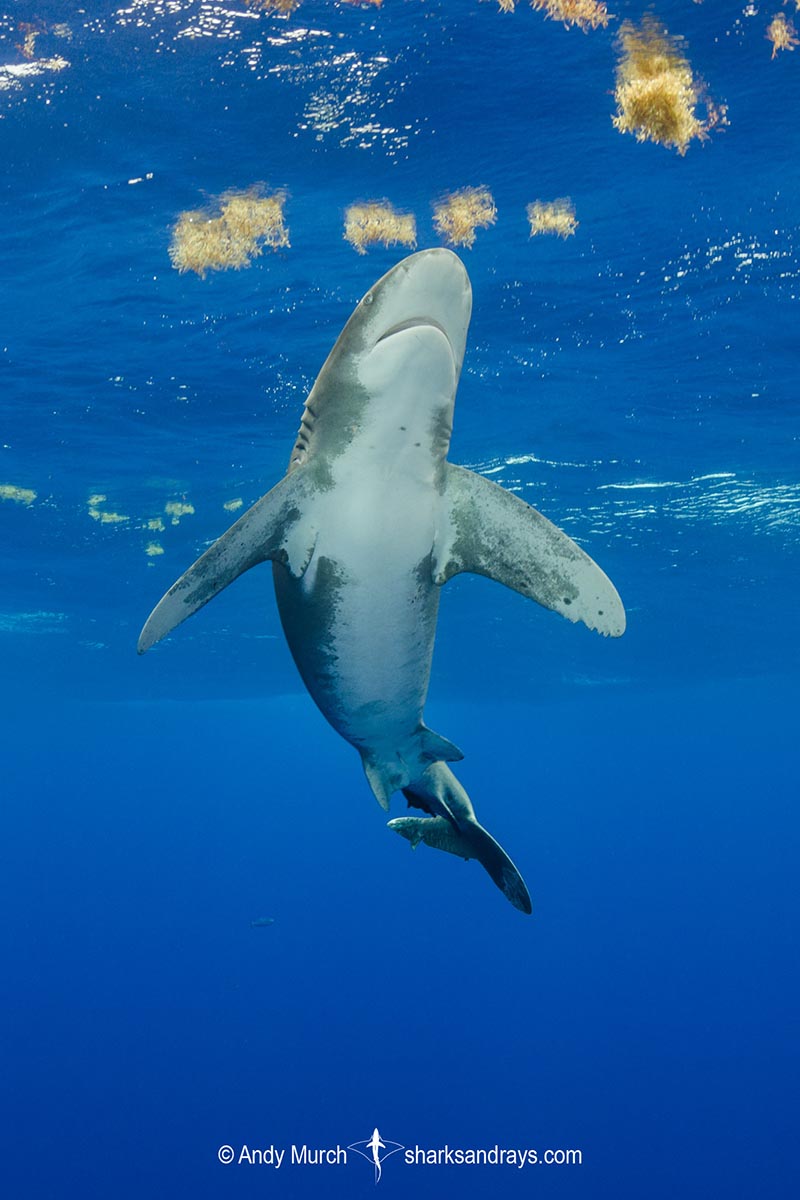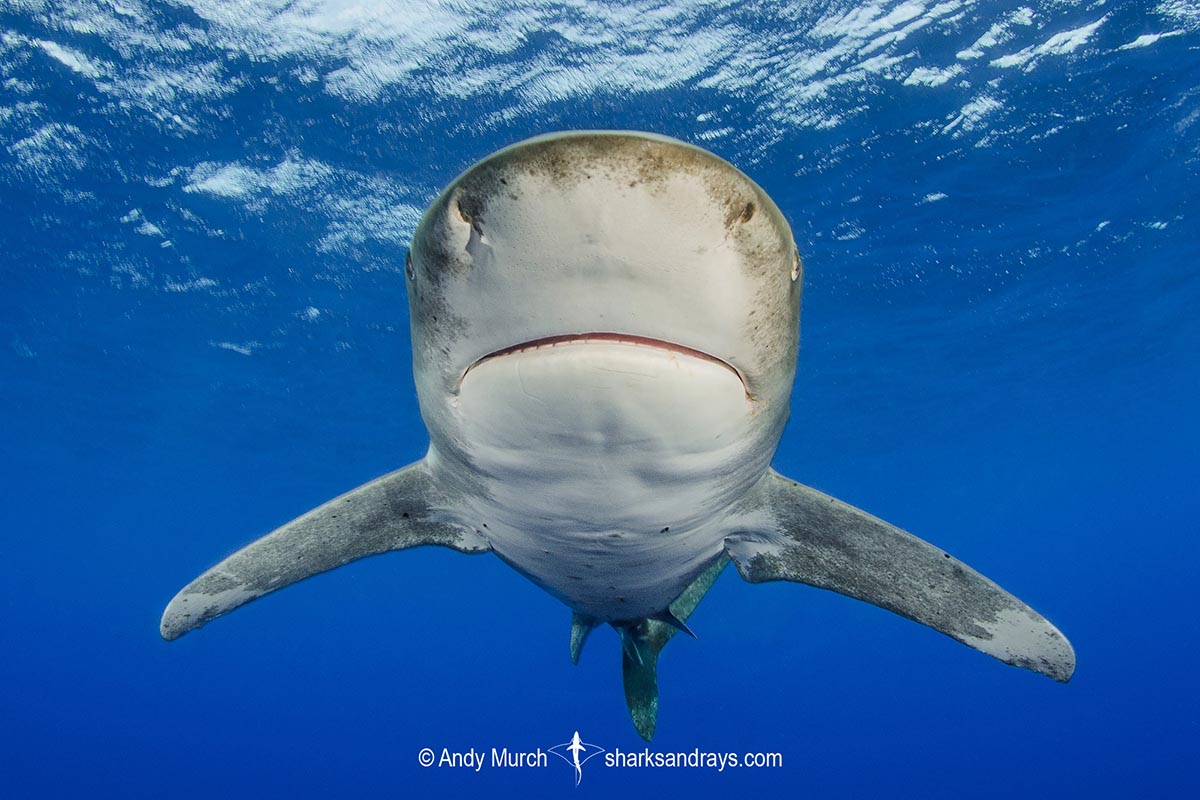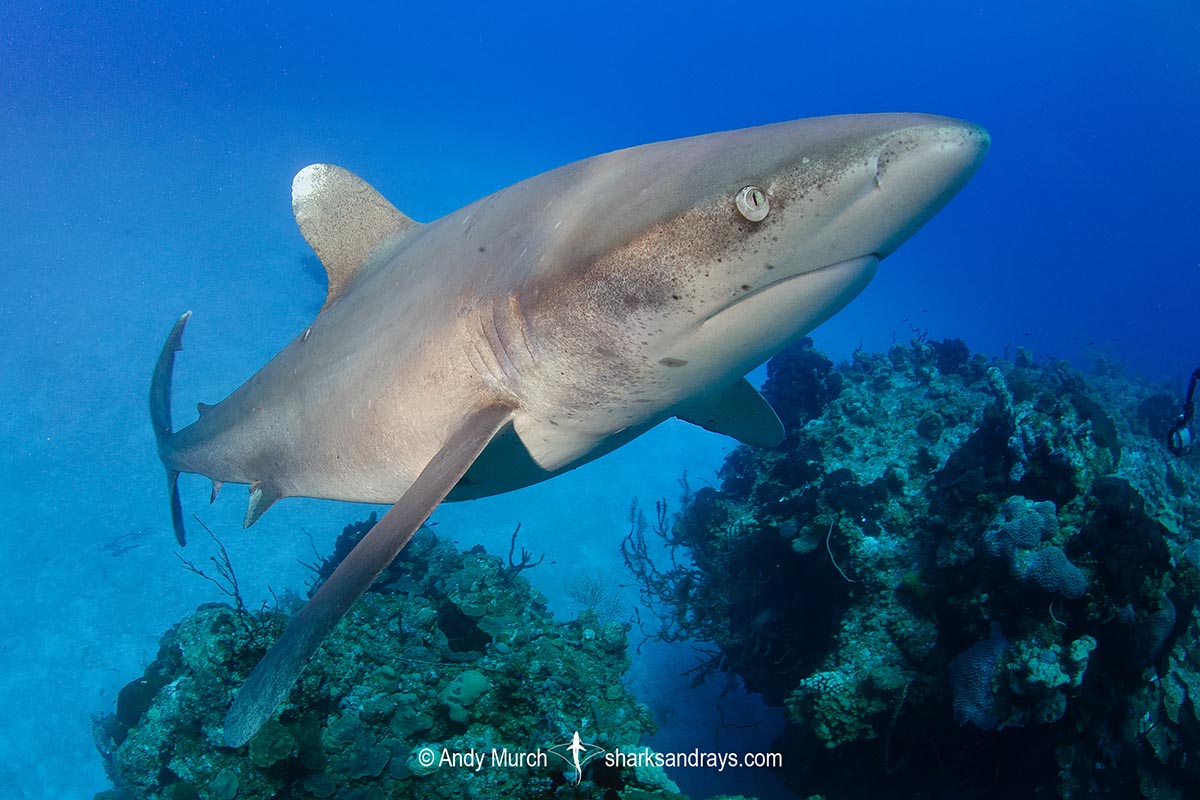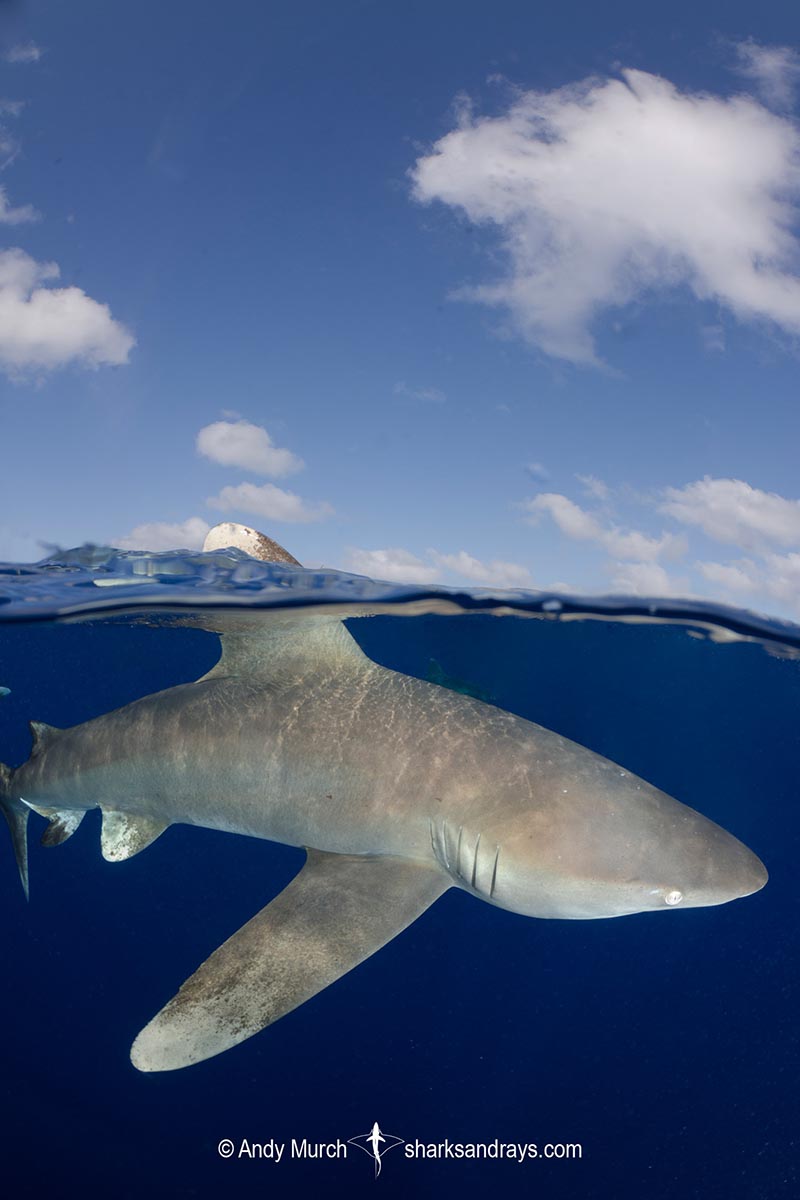Common name(s)
Oceanic Whitetip Shark.
Binomial
Carcharhinus longimanus
Synonyms
Carcharhinus maou, Carcharias insularum, Carcharias longimanus, Carcharias obtusus, Carcharinus longimanus, Pterolamiops budkeri, Pterolamiops longimanus, Pterolamiops magnipinnis, Squalus longimanus, Squalus maou.
Identification
Apex of first dorsal fin broadly rounded. Origin of first dorsal level with free rear tip of pectoral fin. Interdorsal ridge indistinct or absent. Origin of second dorsal fin anterior to origin of anal fin. Pectoral fins long with broadly rounded tips. Dorsal coloration olive-grey, grey-brown, or golden brown with an irregularly speckled countershading margin. Pre-caudal notch sometimes covered by a black blotch. Ventral surface dirty-white or cream. First dorsal fin, pectoral fins, and caudal lobes are white-tipped with similar speckled basal margins. White fin tips vary in size; they may represent more than 20% of the fin’s total length or be barely visible. Second dorsal and anal fins often black-tipped. Neonates sometimes have black-tipped fins which fade to white over time.
Size
Maximum length around 350cm but it is unusual for mature oceanic whitetips to exceed 250cm. Size at birth 55-77cm.
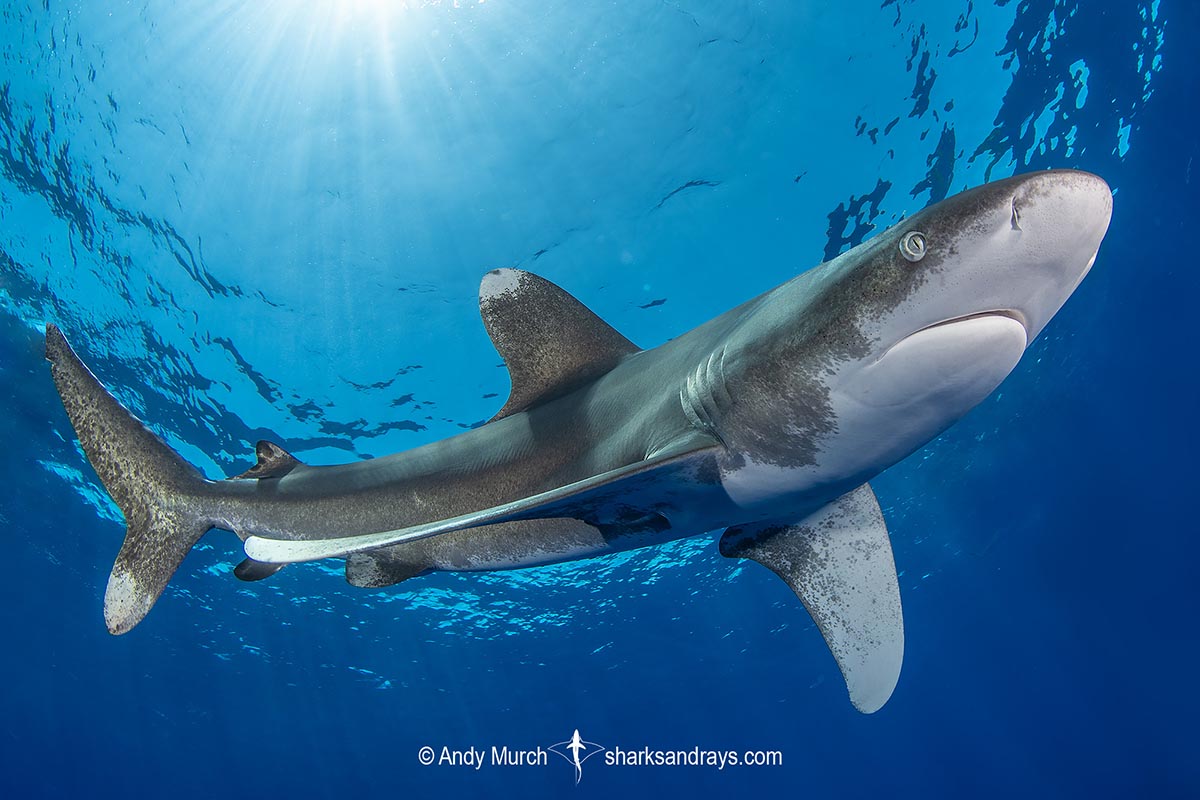
Conservation Status
CRITICALLY ENDANGERED
The Oceanic Whitetip Shark is caught globally as a targeted catch and a bycatch in offshore commercial longline, purse seine, and gillnet fisheries and in coastal longlines, gillnets, trammel nets and trawl fisheries, particularly in areas with narrow continental shelves. The species is often retained for fins, and sometimes meat, unless regulations prohibit retention.
Oceanic whitetips have an inquisitive nature that increases their likelihood of being caught.
The Oceanic Whitetip Shark was once one of the most abundant pelagic shark species in tropical seas worldwide but is now extremely rare in most regions. It is estimated that the overall population has declined by 98%. Some pockets of relative abundance still exist where protection measures have been put in place.
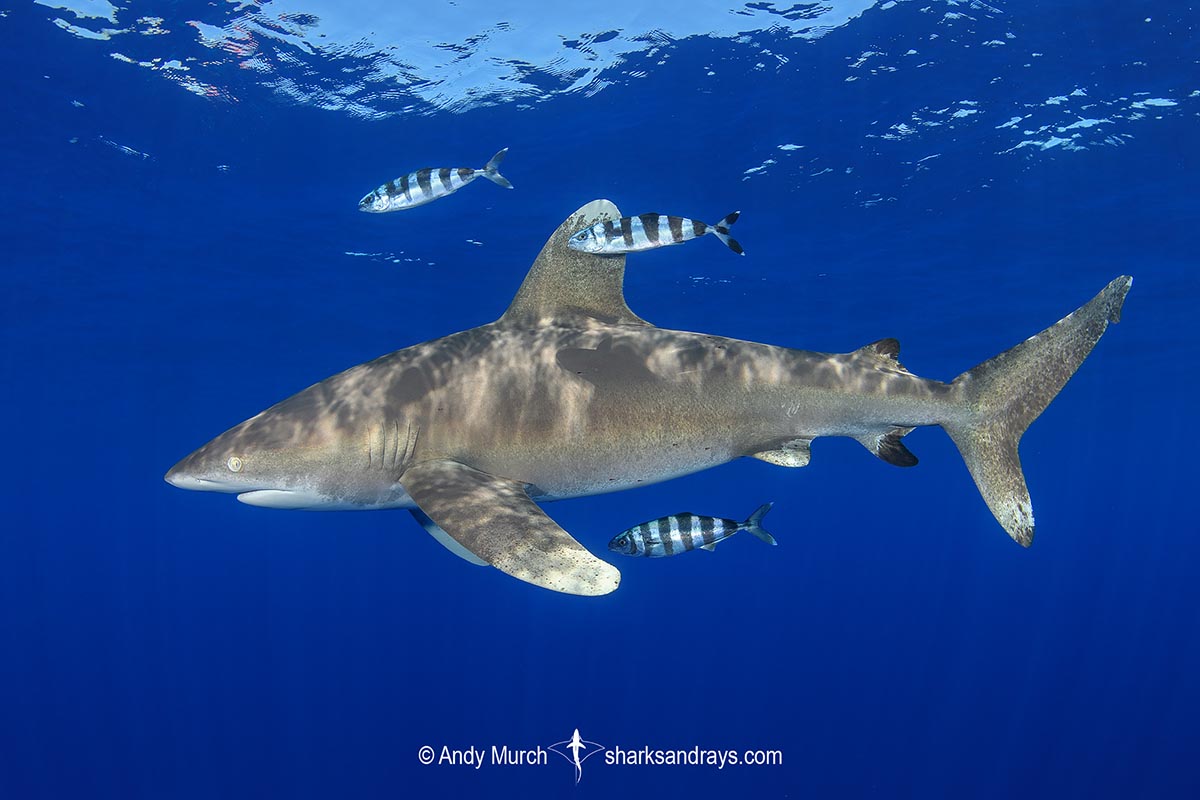
Habitat
Oceanic and very rarely coastal near deep water. Surface to 1082m.
Distribution
Circumtropical/warm temperate in all oceans. Unlike most carcharinid sharks, the oceanic whitetip is not confined by the limits of the continental shelves. It can be found (relatively near the surface) thousands of kms from land.
Reproduction
A viviparous species with yolk-sac placenta. 1-15 pups per litter. Mating occurs biannually.
Diet
Mainly feeds on oceanic bony fishes e.g. blackfin and skipjack tuna, and cephalopods. Because the oceanic whitetip lives in the marine equivalent of a desert, it is an opportunistic predator/scavenger that is also known to consume stingrays, turtles, sea birds, marine gastropods, and crustaceans.
There is an interesting story by a researcher named Bullis from 1961, where he witnessed a group of 1-2m oceanic whitetips waiting at the surface with their mouths open, within a school of spanish sardines that were being hunted by blackfin tuna. Apparently, the sharks were waiting for the tuna to land in their mouths when they leapt from the water in pursuit of the sardines!
Behavior
Oceanic whitetips are nomadic in nature. In the Atlantic summer, they travel north with the Gulf Stream, occasionally reaching Canadian waters before returning to the tropics. They are usually uncomfortable in shallow water. While chumming for oceanics at Cat Island in the Bahamas, as an experiment we slowly motored into shallow water, but the sharks dropped off one by one as the sea floor rose to meet them. By the time we reached the reef, only two oceanics remained but they soon departed regardless of the amount of bait on offer.
Reaction to divers
Generally shy but may closely investigate divers. Very bold and potentially aggressive in baited situations.
Although rarely encountered where divers usually go to dive, oceanic whitetips have been implicated in attacks, especially where the use of bait is involved. They have also been implicated in numerous attacks on shipwreck survivors; especially during the second world war. Much has been written about ocean whitetips carrying away sailors cast into the sea after the sinking of the USS Indianapolis. However, first had accounts suggest that the sharks mostly took dead bodies that were floating on the surface, rather than attacking the survivors. Either way, oceanic whitetip sharks should be treated with caution.
Diving logistics
Although oceanic whitetips are found in all tropical oceans, they rarely stray close to shore so sightings are uncommon. Two exceptions are Brothers Reef in Egypt and Cat Island in the Bahamas.
At Brothers Reef in the Red Sea, oceanic whitetips are fairly commonly sighted. Officially there is not chumming allowed there, but some liveaboards entice the sharks with a fish or two, resulting in sporadic encounters. The sharks have become somewhat habituated so they often check out dive groups even if the divemasters have not brought anything to entice them with.
CAUTION: divers have been attacked and killed in this area.
At Cat Island in the Bahamas, 1000m deep water can be found within 1km from shore, making this an excellent place to encounter oceanic whitetip sharks during April and May when the sharks congregate near the island to feed on migrating tuna.
No dive shops on the island offer trips to see the sharks but Big Fish Expeditions runs multi day trips each April. The dives are conducted with a bait crate that attracts the sharks. This gives the sharks a focus other than the divers themselves. Like all baited dives, there is still an element of risk but careful control of the amount of stimuli keeps the sharks from becoming overly excited.
CAUTION: No one has been harmed while diving with oceanic whitetips at Cat Island but divers should remain extremely vigilant and cautious at all times, especially while on the surface.
Similar species
Other Whitetips
Although there are other species that have white-tipped fins such as the whitetip reef shark and silvertip shark, no other sharks possess the oceanic’s broadly rounded first dorsal, long rounded pectorals, or speckled countershading, so misidentification in the field is highly unlikely.

